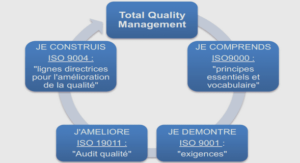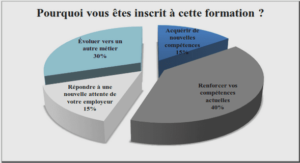CONTRASTIVESTUDY OF VERB MORPHOLOGY BETWEEN ENGLISH AND GAJAAGA SONINKE
PART ONE: INFLECTION
Verb inflection
While derivational affixes can be either prefixes or suffixes, as for inflectional affixes, they cannot but be suffixes only. Moreover, the role of an inflectional affix in English is to indicate grammatical meaning such as tense or number. Inflected forms are also referred to as grammatical morphemes as they express grammatical notions such as number and tense. There are two types of inflection in English: productive inflection, which would attach to any new word entering the language to express a particular grammatical category, and non-productive inflections also known as remnant inflections which are found on select members of class but which would never be added to a new word (A. Carstairs; Mc Carthy; 2002). Verbs can be identified by their inflectional morphology in English. In addition to their inflected base form, verbs typically have up to four different inflected forms, formed by adding one of four inflectional affixes to the appropriate stem form. Those affixes are the past participle suffix + n, the past tense suffix + ed, the third person singular present tense suffix + s and the present participle suffix also known as imperfective or progressive participle + ing (Radford; 1997). Base +N +D +S +ING show shown showed shows showing In the inflection process, inflectional morphemes are not used to produce new words contrarily to derivational morphemes which we will discuss more in detail as the work goes on. Inflectional morphemes indicate aspects of a grammatical function (G. Yule; 2006). To paraphrase George Yule, we can assert that English verbs always concord with their subject in number. But, as for tense forms there is no overt marker of this agreement.
Verb agreement in English
Whenever we talk about number, it refers to singular and plural determination. Number is expressed in a limited way in verbs by the singular –s of third person singular which occurs in present tense but in the past tense. It is more developed with the verb BE rather than other verbs (singular am, is, was, plural are, were) (Brinton, 2000). So, given that English verbs always concord with their subject in number, we are having this discussion by taking verbs not in isolation but in simple sentences containing subjects, to see how they will be reacting to grammatical modifications expressing number. The neutral form of a verb such as /look/ can be said to be a verb form which has no marker because not linked to any subject. It is a lexical morpheme that indicates an action. Then, look can be analysed as V + no number. 1. The boy looks 2. The boys look These forms are considered as the regular forms of verbs as being the commonest. The verb used in these sentences (look) agrees with the subjects as it concords with number. Then the verb in 1 can be analysed as follow: 1. The boy looks ₌ the boy → sing + looks (non-past) → verb + sing (-s). 2. The boys look ₌ the boys →pl + look (non-past) → verb + plural The boy looks. Verb ₌ V₌ look; tense→ non-past →number ₌ sing→ infl suf ₌ -s The boys look. Verb ₌ V₌ look; tense→ non-past →number ₌ pl→ infl suf ₌ Ø In 2 we can realize that the verb concords with number but there is no concrete realisation of that number. Therefore, V – singular marker (–s) generates: V + pl that is verb in plural. More examples can be given to show that it is not peculiar to the above examples but general remark as far as number expression is concerned. All the sentences which we propose below agree with number. Then we will analyse the inflection process as done above. 3. The dog barks. 4. The dogs bark. 24 Verb ₌ V₌ bark; tense→ non-past →number ₌ sing→ infl suf ₌ -s Verb ₌ V₌ bark; tense→ non-past →number ₌ pl→ infl suf ₌ Ø 5. Mr Fall teaches. 6. Mr Fall and Mrs Diop teach. Verb ₌ V₌ teach; tense→ non-past →number ₌ sing→ infl suf ₌ -es Verb ₌ V₌ teach; tense→ non-past →number ₌ pl→ infl suf ₌ Ø 7. The woman goes. 8. The women go. Verb ₌ V₌ go; tense→ non-past →number ₌ sing→ infl suf ₌ -es Verb ₌ V₌ go; tense→ non-past →number ₌ pl→ infl suf ₌ Ø 9. The fireman rescues. 10. The firemen rescue. Verb ₌ V₌ rescue; tense→ non-past →number ₌ sing→ infl suf ₌ -s Verb ₌ V₌ rescue; tense→ non-past →number ₌ pl→ infl suf ₌ Ø Number in inflection is characterised by one inflectional suffix –s which varies to –es; -oes depending on the way the verb’s final morph is written. However, the plural inflection has no concrete realisation. To characterise number in verbs, we must know that if the subject is singular the verb also has to be singular and that singularity is marked by the inflectional suffix –s but for third person singular only. when the subject is plural, the verb also has to be plural. Though there is no plural marker for the verb. So, we are describing it here as null realisation. One can argue that for English number is primarily a category associated with nouns only then a category associated with the verb; the subject noun controls the number morpheme on the verb (K. Brown and J. Miller, 1991). Number is not always marked in English verbal inflection. It is marked only in singular and that in third person singular by the inflectional morph –s and this inflection process is known as agglutinative rule. That is, there a single morpheme on the left hand side to which is attached a single morph on the left hand side. 25 That is: He thinks ₌ think verb → think-s ₌ sing → -s (inflectional morph). As for plurality, it obeys to the null realisation rule. That is, for a string verb plus plural there is no visible marker though it concords as said above with the noun subject when it is in plural. For instance: They go₌ go verb → go ₌ verb + plural The fact that verbs contain the inflectional suffix –s means that the verb is singular and in present tense as it agrees with its singular subject (he/ she/ it) or any subject that can be substituted by any of these personal pronouns. Whereas when the verb appears without any suffix bound to it; that means that it is in plural, due to its agreement with plural subject. Nevertheless, one can see a singular subject which does not affect its verb so as to bear a suffix, that is the case of first person singular and third person singular ( I and You). But we are not going to demonstrate on that since that case is concerned with grammar rather than word formation. NB: let us emphasise that the singular marker we have presented concerns only the third persons singular that is he/she/it and any other subject which can be replaced by third person singular pronouns. Because, first person and second person singular, despite being singular, they have no marker. Therefore, the English verbs mark number only in third person singular. Morphological realisation rules in English: – V + non-past → V Go → go Talk → talk Think → think – Singular (3rd prs) → -s, es, oes Think → thinks Go → goes Dress → dresses 26 – V + past → -ed Talk → talked Rescue → rescued Think + past → thought (irregular)
Verb agreement in Soninke
In Soninke, verb singularity and plurality are defined by the subjects. It is through the context and the subject that the Soninke expresses its verb singularity and plurality. That is to say, there is no plural marker or a singular marker which can be attached to the verb to define number. 1. N ri → subject + verb +Ø I come 2. An ri → subject + verb +Ø You come. 3. O ri → subject + verb +Ø We come. 4. Xa ri → subject + verb +Ø You come(pl). 5. I ri → subject + verb +Ø They come. As one can see in the examples above, there is not any plural marker in any of the sentences bearing all as verb RI. Depending on the context, the language performer will know the plural and singular sentences. However, it is the subjects that bear the idea of plurality but not the verb.
Contrast between English and Soninke verb agreement
Singularity is defined differently in English and Soninke. That difference exists only in the third person singular. But as for the two first person singulars, in both English and Soninke, there is no concrete singular marker in first person and second person singular. For example: 27 English: Soninke: I go → subj (sing) + verb +Ø N daga → subj (sing) + verb +Ø You (2nd pers sing) go → subj (sing) + verb +Ø an daga → subj (sing) + verb +Ø I drink → subj (sing) + verb +Ø n mini → subj (sing) + verb +Ø You (2nd pers sing) drink. → subj (sing) + verb +Ø an mini → subj (sing) + verb +Ø In the examples above, we have GO and DRINK plus null realisation in English and DAGA and MINI plus null realisation in Soninke. But when it comes to third person singular, the English verb is marked by adding an inflectional suffix to the basic verb –s (if the verb ends with a consonant or a vowel other than o) –oes (if the verb ends with o) –es (when the verb ends with s, x). Example: He goes → subj (sing) + verb + inf suf –oes. She goes → subj (sing) + verb + inf suf –oes. It goes → subj (sing) + verb + inf suf –oes. He drinks → subj (sing) + verb + inf suf –s. She drinks → subj (sing) + verb + inf suf –s. It drinks → subj (sing) + verb + inf suf –s. He dreeses → subj (sing) + verb (dress) + inf suf –e. She dresses → subj (sing) + verb (dress) + inf suf –e. It dresses → subj (sing) + verb (dress) + inf suf –es. As for the Soninke third person singular, it has no inflectional suffix. Its form is similar to that of the other subjects and contrarily to English, it has only one personal pronoun to talk about both humans, objects and animals: A daga → subj (sing) +verb +Ø 28 He/she/it goes A mini → subj (sing) +verb +Ø He/she/it drinks A faxu → subj (sing) +verb +Ø It barks A xenqe → subj (sing) +verb +Ø He/she/it sleeps So, contrarily to English, there is no inflectional affixation in third person singular. As far as plurality is concerned, English and Soninke are similar in the extent that they both do not have a concrete plural marker for the verb. But they both express plurality by the subjects. That is to say that it is whether the subject is in singular or plural that one can know to which number the verb refers to. English: Soninke: We go. O daga You go. Xa daga They go. I daga We drink. O mini You drink. Xa mini They drink. I mini
Tenses in English
The inflection relating present and past grammatical functions of a verb is an inflection of tense. It is the linguistic indication of the time of an action. In fact, tense establishes a relation: it indicates the time of an event in respect to the moment of speaking (Brinton, 2000). However, let us bear in mind that tense is not the only means of expressing time, because adverbs also exist in languages to play that role (always, yesterday…). So, our study 29 of the English verb inflection is also being structured regarding the tenses that exist in English. Traditional grammar books usually treat the English tenses as being three; that is, present, past and future. But if a tense is a word stem which informs about a moment of completion of an action and which informs about the action performer, English language can be said to have only two tenses. That is: the present and the past tense. After having defined what a tense is and what tenses we have in English, as we cannot deal with verb inflection without mentioning the tenses. We cannot also go any farther without raising the question to know: what types of verbs does the English language have? The importance of this question lays on the purpose to know how the different verbs would be structured when they are in the present or past tense. Then we would assume that there are regular and irregular verbs in English. In contrast, what is often considered future tense is formed from an auxiliary verb (shall or will), used in the present tense plus a verb stem which would express the future action which is to be delivered. As a matter of fact, the English language does not have a future tense but it has a syntactic process to express the future. As Jean Perre Gabilan put it: English language has two basic conjugations traditionally referred to as the present and the past. Some books would refer to the latter as Preterit instead of past but there is no more than these two conjugations. Everything is organised around these two tenses2 (J.P. Gabilan; 2006). However, present and past can be considered tenses of the English language as they are formed from one verb stem. To put the flesh on the bones of this assessment, let us take some examples of present and past tense in some sentences below: Present: To treat ₌ V + non tense 1. The students treat the case. Treat ₌ treat (V) in present tense 2 Trasnlated from french : Grammaire Expliqué de l’Anglais.’’ L’anglais possède deux conjugaisons de base appelées traditionnellement Présent et Prétérit- certains ouvrages parlent de past au lieu de Prétérit – et pas une de plus (Jean Pierre Gabilan ; 2006). 30 2. The housemaid works in the house. Works ₌ work (V) in present tense third person singular –s 3. The rain falls. Falls ₌ fall (V) in present tense third person singular –s 4. The man likes it. Likes: like (V) + present -s in present tense (third person singular) –s. Past: 5. They rescued the people. Rescued ₌ V + past –ed in present tense (third person plural). 6. The students treated the case. Treated ₌ treat (V) + past –ed, third person plural. 7. The housemaid worked in the house. Worked ₌ work + past –ed, in third person singular 8. The rain fell. Fell ₌ fall (V) + past Ø. Third person singular. 9. They understood. Understood ₌ understand + past Ø. Third person plural. 10. The man liked it. Liked: like (V) + past – ed. Third person singular. As one can see, on the one hand, the present and the past tenses used in the examples above are all formed from one verb stem. On the other, the present tense has one inflectional suffix to materialise the present tense. Whereas, the past tense is materialised by one inflectional suffix –ed which is born by all the regular verbs of any subject. 31 When dealing with the present tense, one cannot talk of irregular verbs because the features of that verb category are to be seen in the past tense. So then, we will first see how inflection works in the present tense? What grammatical words are associated with inflected lexemes? How these grammatical words are regularly expressed and what kinds of irregularity they may display?
INTRODUCTION |



